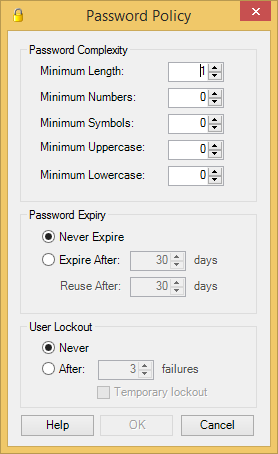Password policies include an option to lock out user accounts after a number of failed login attempts, however, this is not always appropriate as it allows a malicious user to, instead, effectively perform a denial of service attack. As an alternative to account lockouts, an exponential back-off strategy provides a mechanism to prevent malicious users from attempting to obtain a user's password via brute force.
Using exponential back-off, you can temporarily lock out an account with a number of consecutive failed login attempts, preventing further login attempts until the lockout expires. The lockout time increases exponentially, but a successful login attempt resets the failed attempt count, so that subsequent attempts are no longer delayed.
The delay period is calculated as follows:
Min(MaximumDelay, InitialPenalty + (2^(Number of failures above threshold)) * IncrementalPenalty)
Login failures and temporary lockouts do not accumulate across Rhapsody restarts.
Enabling Exponential Back-off
To enable exponential back-off:
- Navigate to View>User Manager... to display the User Manager.
Select the Password Policy tab and then select the Password Policy button. The Password Policy dialog is displayed:
- Under User Lockout:
- Select the Temporary lockout checkbox.
- In the After field, set the threshold or the number of login failures after which the temporary lockout applies.
- Select the OK button. This temporarily locks out the user accounts in Rhapsody, if the password is entered incorrectly more than <n> times.
The other parameters are configured via the rhapsody.properties file.
All these properties are configurable in seconds.
Property Name |
Range |
Default Value |
|---|---|---|
|
1 second - 24 hours |
20 minutes |
|
0 - 5 minutes |
30 seconds |
|
0 - 1 hour |
4 seconds |
The result of these default settings, with a threshold set at 3 attempts, is as follows:
After |
Delay |
|---|---|
Failures 0-2 |
No delay |
Failure 3 |
34 seconds |
Failure 4 |
38 seconds |
Failure 5 |
46 seconds |
Failure 6 |
62 seconds |
Failure 7 |
94 seconds |
Failure 8 |
158 seconds |
Failure 9 |
286 seconds |
Failure 10 |
542 seconds |
Failure 11 |
1054 seconds |
Failure 12 |
1200 seconds (maximum delay of 20 minutes) |
